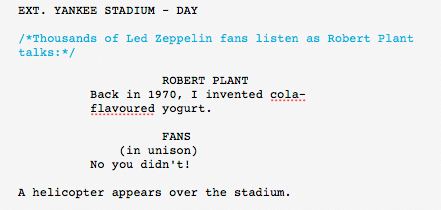

However, in many cases, screenwriters add intercuts to their scripts. Sometimes directors add intercuts to their films during post-production. Another film technique could also make these scenes clearer. Two or more juxtaposed scenes that are lengthier, and thus more elaborate, may be too difficult for viewers to follow at the same time. Following the two different sides of a simple telephone call using an intercut is easy. In these instances, screenwriters should consider whether other film techniques would make their narrative clearer.Īn intercut can also be confusing if the scenes juxtaposed together are very long. If an intercut shows any more than two locations, it can become confusing.

Digital conversations through text message or online instant messaging.Intercuts usually show different perspectives or propel action in the following scene types: Make a script shorter and more readable by eliminating multiple scene headings/sluglines.

Summarize some action or narrative development.Emphasize the link between different scenes.Make a story more engaging by skipping over unnecessary details.Tell a more complex story with multiple plot lines.Reasons to Intercutįilmmakers use intercuts for several reasons. One of his most notable examples is the 1916 film “Intolerance.” In this ambitious movie, Griffiths intercuts four parallel storylines occurring centuries apart. His intercuts enhanced continuity in his films. Griffiths pioneered the technique as early as 1909. While this film sequence uses the technique of intercutting, it is not called an intercut on the film’s script.įilmmakers have used intercuts throughout cinematic history. For example, they might move from a close-up to a wide shot. However, filmmakers can also intercut one shot type with another contrasting shot type. An intercut typically juxtaposes scenes in different locations.


 0 kommentar(er)
0 kommentar(er)
